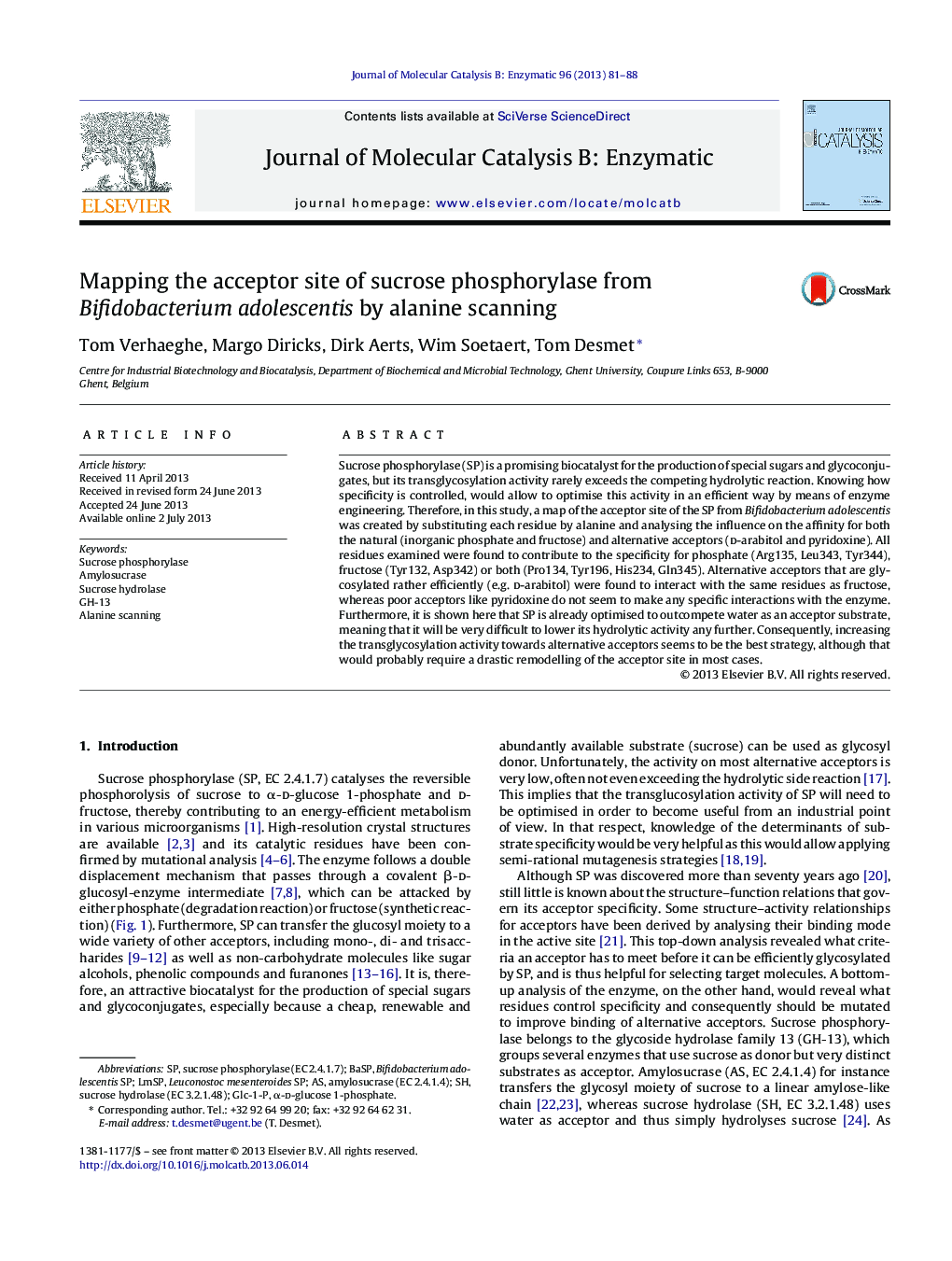| Article ID | Journal | Published Year | Pages | File Type |
|---|---|---|---|---|
| 69798 | Journal of Molecular Catalysis B: Enzymatic | 2013 | 8 Pages |
•Sucrose phosphorylase was compared with related enzymes (sequence and structure).•Several acceptor site residues were substituted by alanine to investigate specificity.•Sucrose phosphorylase is highly optimised for recognising its natural acceptors.•Hydrolytic side activity is not controlled by residues in the acceptor site.•Changing specificity will probably require drastic remodelling of the acceptor site.
Sucrose phosphorylase (SP) is a promising biocatalyst for the production of special sugars and glycoconjugates, but its transglycosylation activity rarely exceeds the competing hydrolytic reaction. Knowing how specificity is controlled, would allow to optimise this activity in an efficient way by means of enzyme engineering. Therefore, in this study, a map of the acceptor site of the SP from Bifidobacterium adolescentis was created by substituting each residue by alanine and analysing the influence on the affinity for both the natural (inorganic phosphate and fructose) and alternative acceptors (d-arabitol and pyridoxine). All residues examined were found to contribute to the specificity for phosphate (Arg135, Leu343, Tyr344), fructose (Tyr132, Asp342) or both (Pro134, Tyr196, His234, Gln345). Alternative acceptors that are glycosylated rather efficiently (e.g. d-arabitol) were found to interact with the same residues as fructose, whereas poor acceptors like pyridoxine do not seem to make any specific interactions with the enzyme. Furthermore, it is shown here that SP is already optimised to outcompete water as an acceptor substrate, meaning that it will be very difficult to lower its hydrolytic activity any further. Consequently, increasing the transglycosylation activity towards alternative acceptors seems to be the best strategy, although that would probably require a drastic remodelling of the acceptor site in most cases.
Graphical abstractFigure optionsDownload full-size imageDownload as PowerPoint slide
